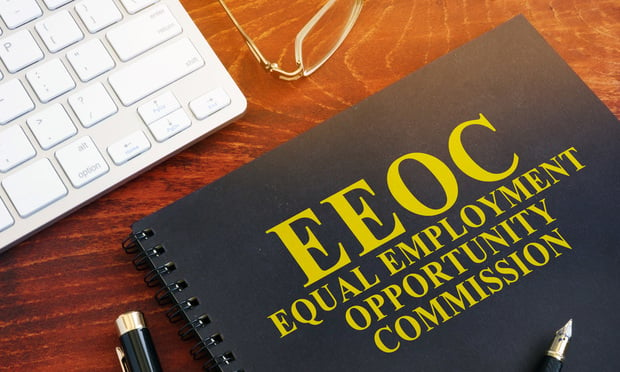 ACA compliance reporting isn't a one and done activity, so be sure to have rock-solid process documentation established and shared across departments.
ACA compliance reporting isn't a one and done activity, so be sure to have rock-solid process documentation established and shared across departments.
It's no secret that the IRS is sending out its 226-J letter to companies across America, warning that they face financial penalties for not adhering to federal ACA employer requirements. Rather than meekly accepting the coming financial hit, or worse yet, ignoring the letter altogether (yes, some organizations do that), there's a little-known tactic that employers can use that could save millions of dollars in proposed penalties: Talk to one another!
In today's corporate America, it's not unusual for cross-departmental communication to take a back seat to the streamlined efficiencies of siloed work processes. That structure, however, comes with risks. In fact, we've had organizations come to us after working with other outside resources and wound up paying as much as $1 million in unwarranted ACA noncompliance fines—because of poor internal communication.
Take a look at the following scenarios to see if one looks familiar within your organization:
|Scenario 1
One of your benefits staffers dutifully files ACA data per all established guidelines. Several months later, she leaves your company for another career opportunity. Because the IRS has three years to review the submitted data and issue a penalty warning, a new employee receiving the letter might not recognize it for what it is and delay dealing with it. Or, the letter could end up in a corporate version of limbo because the mail center is unclear about who the appropriate recipient should be.
|Scenario 2
A 226-J letter winds up in the inbox of the tax, finance or accounts payable department. Because ACA reporting compliance is a benefits administration task, the tax, finance or AP employee simply sets the letter aside, intending to forward it to your benefits department at a later time. And then forgets about it.
|Scenario 3
The tax, finance or accounts payable department receives an IRS invoice for penalties because the company didn't respond to the 226-J letter within the timeframe dictated. Assuming the organization is liable for the full amount of the bill, the department issues a check without discussing the penalty with the right people in the benefits department.
|Scenario 4
The 226-J letter arrives in the right mailbox. The benefits employee who submitted the data recognizes the IRS warning and opens the letter immediately. After perusing the letter's content, the employee assumes that the government's assessed potential penalty is accurate. Without digging into whether simply correcting the submitted data could lessen or alleviate the penalty altogether, the employee initiates the company's internal process for full payment. No one involved in the payment process questions it, either.
|Scenario 5
The 226-J letter arrives in the right mailbox. The benefits employee who submitted the data recognizes the IRS warning and opens the letter immediately. After perusing the letter's content, the employee realizes that the payments are based on data that the employer has since corrected with the IRS by providing correction files. Based on this realization, the employee takes no action and, in time, receives an IRS invoice.
In each of the above scenarios, the straightforward act of communication—across and within your corporate matrix—could greatly reduce the risk of paying uncalled-for IRS fines. Therefore, we encourage every employer's benefits department, whether or not they suspect they could receive a 226-J letter, to:
First, share as much information as possible with your accounts payable, finance and/or tax departments about the ACA reporting process, including what information is filed with the IRS and why, along with deadlines the IRS sets for requesting extensions and correcting errors. If an employer suspects it could receive a 226-J letter, be sure to let other areas in your company know to whom in the benefits department to forward it.
Next, question whether you actually owe the amount of a proposed fine. For example, we've seen cases where a company's reported data makes it appear that it hadn't reached the required 95 percent threshold of offers for affordable coverage when, in fact, the employer was overly generous and offered coverage to more people than was required. What we discovered in these cases is that whomever filed the data—either an internal staff member or an outside vendor—just reported the data incorrectly.
In these cases, doing a little research and checking with the right benefits administrators uncovered information needed to correct the data. In the case of an employer who receives a 226-J letter requesting corrections that the employer believes they have already submitted, understand that a reply to the 226-J letter is still necessary, since the government's analysis didn't take into account the submitted corrections.
Third, understand that when communicating with the IRS, time really is money. 226-J letters are a forewarning that you'll receive an invoice if you don't provide correction. If you need an extension to comply, you need to tell the IRS as soon as possible, as corrections frequently require the benefits department to do some research. If a response to the IRS isn't made within specified timelines, it will assess its penalty. If an organization is late in paying a first penalty invoice, it will start accruing penalty letters and fines. The IRS could even place a lien on company property.
Lastly, ACA compliance reporting isn't a one and done activity, so be sure to have rock-solid process documentation established and shared across departments so that you can readily review data and provide timely corrections to the IRS, thereby avoiding payments you wouldn't have been liable for had data been correctly submitted. Many employers have been able to get proposed penalties waived or significantly reduced by properly claiming transition relief, correcting full-time employee counts and updating individual employee offer of coverage information.
It's never pleasant to find a 226-J letter lurking in your mailbox. In the event that your organization legitimately owes the IRS, communication among your finance, AP, tax and benefits teams continues to play a vital role. For example, informing the benefits team about a penalty payment provides them with an important clue that changes may be needed in making decisions about future benefits offerings. In other words, the benefits team can better understand the level of noncompliance risk when it understands how many employees are not taking company insurance (if and when offered), along with how many of those with and without offers opt into federal marketplace plans and apply for the premium tax credit.
A final piece of advice: Some fortunate employers have the internal capacity to fulfill that IRS invitation to respond to an IRS inquiry; many, however, must rely on technology from an outside vendor to research the data, and compile and submit corrected forms. If your organization falls into the second category, it's vital to your financial stability to make sure your vendor provides transparency into your data and potential penalty risk. And, if you receive a 226-J letter, that it will support you in quickly responding to the request for supporting data. In the end, however you manage your ACA responsibilities, you can be sure that a little communication and information sharing with colleagues and co-workers will reduce the hassle.
Kyle Scott is assistant vice president of compliance at Health e(fx) where she oversees ACA compliance and 226-J response support. Kyle is Certified in Healthcare Compliance (CHC), holds a Certified Health Reform Specialist (CHRS) designation, and achieved certificates in Management Information Systems, Health Law, and Human Resources Compliance.
Read more:
Complete your profile to continue reading and get FREE access to BenefitsPRO, part of your ALM digital membership.
Your access to unlimited BenefitsPRO content isn’t changing.
Once you are an ALM digital member, you’ll receive:
- Breaking benefits news and analysis, on-site and via our newsletters and custom alerts
- Educational webcasts, white papers, and ebooks from industry thought leaders
- Critical converage of the property casualty insurance and financial advisory markets on our other ALM sites, PropertyCasualty360 and ThinkAdvisor
Already have an account? Sign In Now
© 2024 ALM Global, LLC, All Rights Reserved. Request academic re-use from www.copyright.com. All other uses, submit a request to [email protected]. For more information visit Asset & Logo Licensing.








